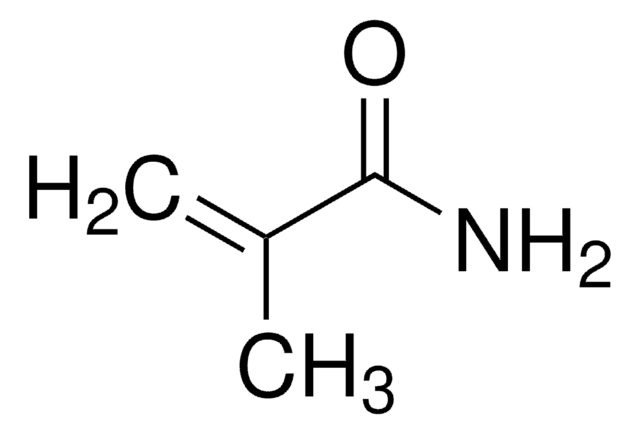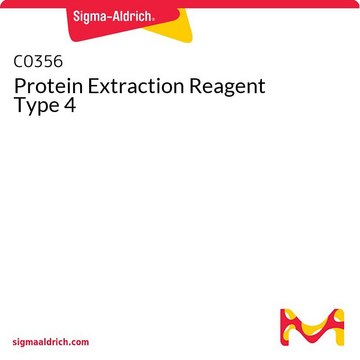Kluczowe dokumenty
A3221
Iodoacetamide
Single use vial of 56 mg
Synonim(y):
2-jodoacetamid, Monojodoacetamid, alfa-jodooctamid
About This Item
Polecane produkty
pochodzenie biologiczne
synthetic (organic)
Próba
≥99% (HPLC)
Formularz
powder
opakowanie
vial of 56 mg (Single use)
warunki przechowywania
(Tightly closed. Dry. Keep in a well-ventilated place. Keep locked up or in an area accessible
only to qualified or authorized persons.)
kolor
white to off-white
mp
92-95 °C (lit.)
rozpuszczalność
H2O: soluble 50 mg/mL, clear, colorless to faintly yellow
przydatność
suitable for LC-MS
Zastosowanie
microbiology
temp. przechowywania
2-8°C
ciąg SMILES
NC(=O)CI
InChI
1S/C2H4INO/c3-1-2(4)5/h1H2,(H2,4,5)
Klucz InChI
PGLTVOMIXTUURA-UHFFFAOYSA-N
Szukasz podobnych produktów? Odwiedź Przewodnik dotyczący porównywania produktów
Opis ogólny
It has specific interactions with cysteine and histidine residues in proteins, affecting enzymes like ribonuclease. While it may react slowly with histidine, its inhibitory properties contribute to the research on proteases, such as cysteine proteases. Iodoacetamide is known for its irreversibility in inhibiting enzymes and its ability to form stable protein derivatives, making it valuable in studying protein structures, protein behavior, and enzyme inhibition.
Zastosowanie
- to prevent enzymatic disulfide reduction in the protein samples
- to inhibit glyceraldehyde-3-phosphate dehydrogenase effectively blocking ATP production in cell biology research
Działania biochem./fizjol.
Cechy i korzyści
Opakowanie
Inne uwagi
Informacje prawne
najczęściej kupowane z tym produktem
produkt podobny
Hasło ostrzegawcze
Danger
Zwroty wskazujące rodzaj zagrożenia
Zwroty wskazujące środki ostrożności
Klasyfikacja zagrożeń
Acute Tox. 3 Oral - Aquatic Chronic 4 - Resp. Sens. 1 - Skin Sens. 1
Kod klasy składowania
6.1C - Combustible acute toxic Cat.3 / toxic compounds or compounds which causing chronic effects
Klasa zagrożenia wodnego (WGK)
WGK 3
Temperatura zapłonu (°F)
Not applicable
Temperatura zapłonu (°C)
Not applicable
Środki ochrony indywidualnej
Eyeshields, Faceshields, Gloves, type P2 (EN 143) respirator cartridges
Wybierz jedną z najnowszych wersji:
Certyfikaty analizy (CoA)
Nie widzisz odpowiedniej wersji?
Jeśli potrzebujesz konkretnej wersji, możesz wyszukać konkretny certyfikat według numeru partii lub serii.
Masz już ten produkt?
Dokumenty związane z niedawno zakupionymi produktami zostały zamieszczone w Bibliotece dokumentów.
Klienci oglądali również te produkty
Produkty
Zestaw do szybkiego trawienia trypsyną zapewnia wiarygodne wyniki analizy spektrometrii masowej w czasie krótszym niż 2 godziny.
In this study, we developed a rapid trypsin digest kit that, at elevated temperatures, yielded reliable, reproducible results in less than 2 hours on a wide variety of substrates for mass spectrometry.
Nasz zespół naukowców ma doświadczenie we wszystkich obszarach badań, w tym w naukach przyrodniczych, materiałoznawstwie, syntezie chemicznej, chromatografii, analityce i wielu innych dziedzinach.
Skontaktuj się z zespołem ds. pomocy technicznej











